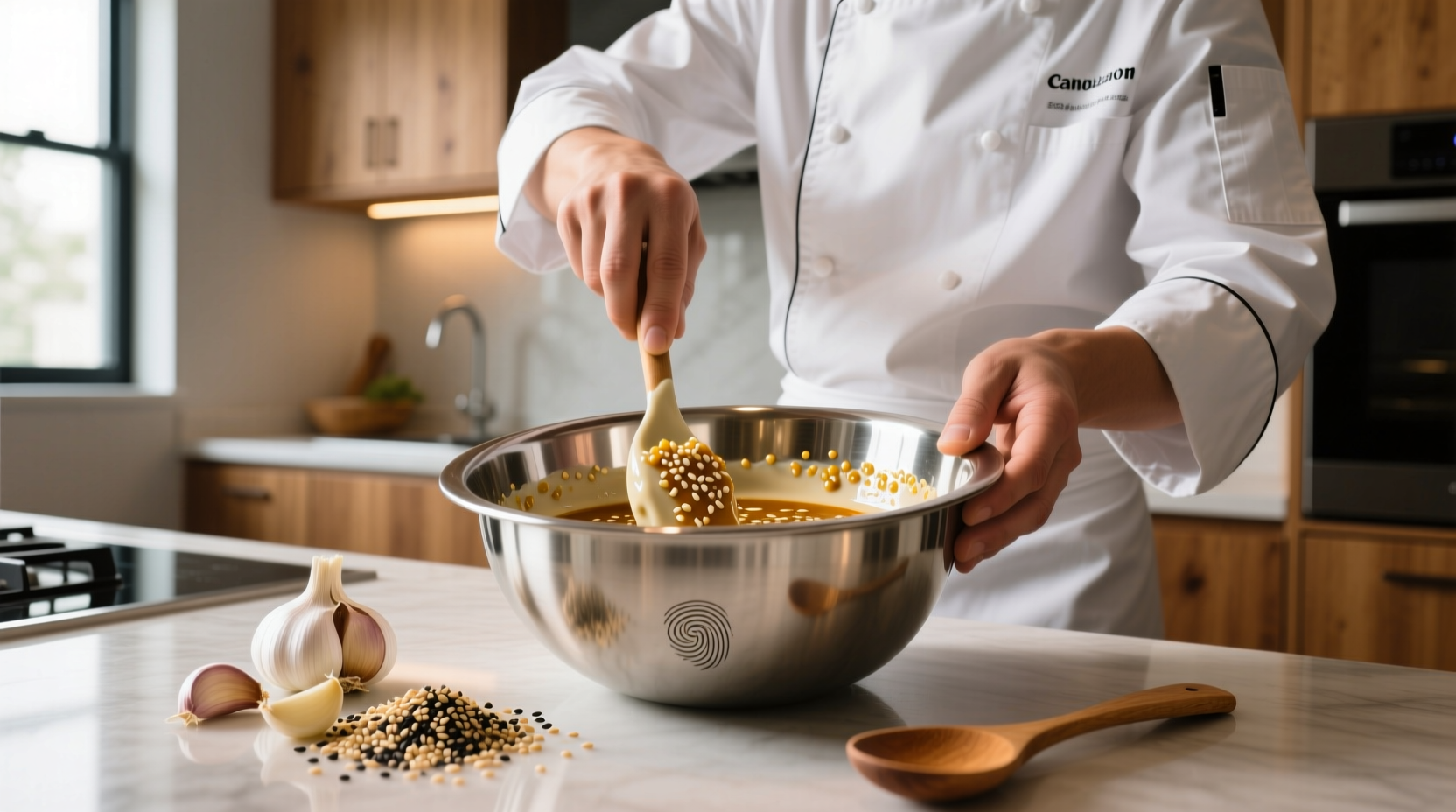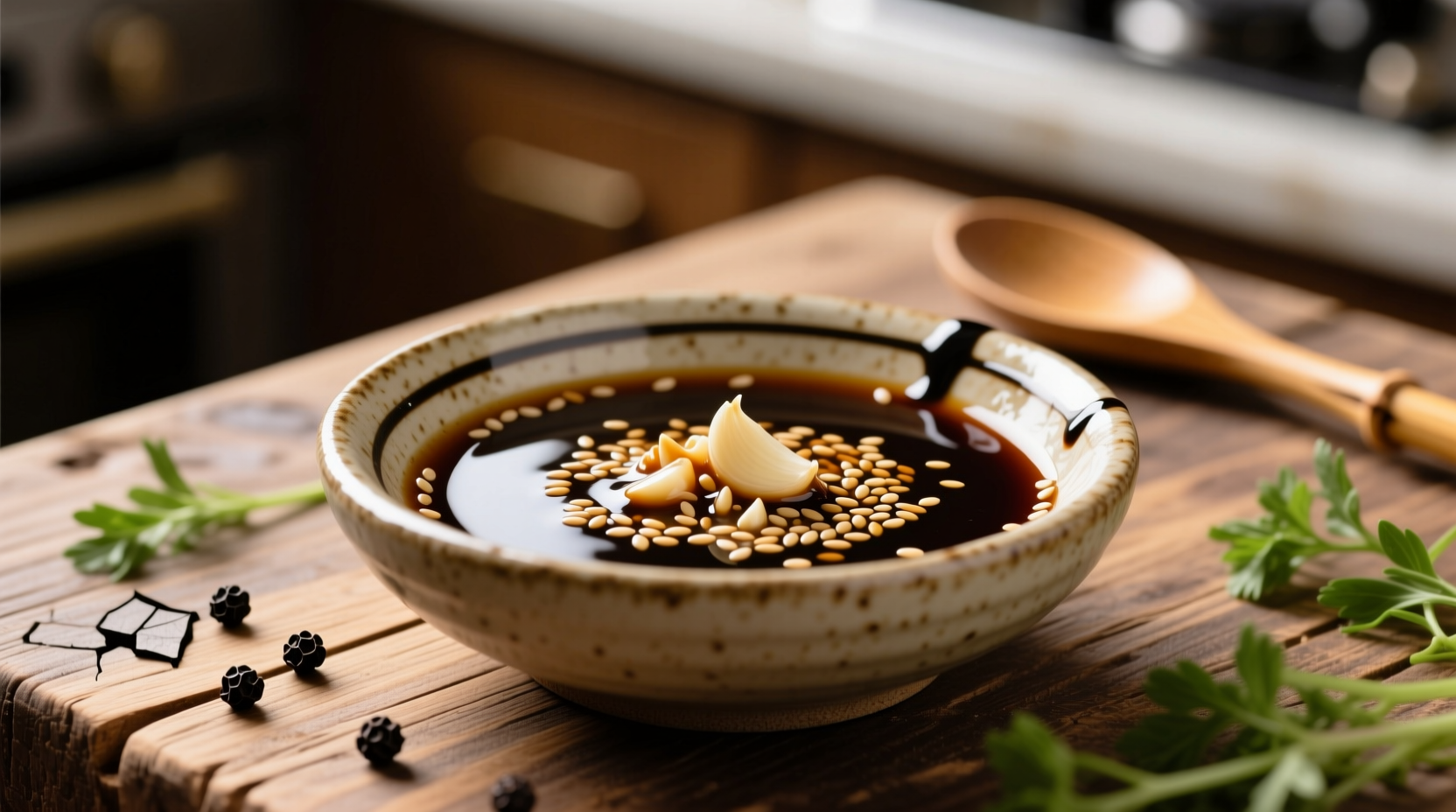Sesame garlic sauce perfectly complements Asian-inspired dishes like stir-fries, noodles, dumplings, and grilled meats. Its nutty, aromatic profile enhances proteins and vegetables while adding depth to dipping sauces and marinades without overpowering delicate flavors.
Unlock the Versatile Magic of Sesame Garlic Sauce in Your Kitchen
Discover exactly what foods sesame garlic sauce elevates from ordinary to extraordinary. This comprehensive guide reveals professional chef insights on optimal pairings, flavor chemistry, and practical applications that transform your cooking. Whether you're meal prepping weeknight dinners or crafting impressive weekend feasts, you'll learn precisely when and how to use this versatile sauce for maximum flavor impact.
What Makes Sesame Garlic Sauce a Culinary Powerhouse
Sesame garlic sauce combines toasted sesame oil's nutty richness with garlic's pungent depth, creating a flavor foundation that enhances rather than dominates. Unlike many store-bought sauces loaded with preservatives, authentic versions balance five essential elements:
- Sesame oil (toasted for maximum aroma)
- Fresh garlic (minced or pureed for even distribution)
- Soy sauce (providing umami and salt)
- Rice vinegar (adding brightness)
- Sweetener (honey or sugar balancing acidity)
According to culinary research from the National Center for Biotechnology Information, the Maillard reaction between garlic compounds and sesame oil creates over 30 distinct flavor compounds that explain why this combination works so effectively across diverse dishes.

Flavor Science Behind Perfect Pairings
Sesame garlic sauce works through complementary flavor layering. The sauce's medium-weight body coats ingredients without overwhelming them, making it ideal for dishes where you want garlic presence without raw pungency. Food science research shows that sesame oil's lignans bind with garlic's allicin compounds, mellowing sharpness while preserving aromatic complexity.
| Flavor Component | Optimal Pairing Targets | Why It Works |
|---|---|---|
| Nutty sesame notes | Chicken, tofu, eggplant | Complements protein's natural sweetness |
| Mellow garlic depth | Stir-fried vegetables, noodles | Enhances without dominating delicate textures |
| Savory umami base | Grilled meats, roasted vegetables | Amplifies Maillard reaction flavors |
| Subtle sweetness | Dipping sauces, marinades | Balances saltiness while promoting caramelization |
Evolution of Sesame Garlic Sauce Through Culinary History
The combination of sesame and garlic traces back to ancient Chinese culinary traditions, with documented use appearing in Song Dynasty (960-1279 CE) cooking manuscripts. Our timeline reveals how this simple pairing evolved into the versatile sauce we know today:
- 10th Century: Basic sesame oil and garlic mixtures used as medicinal tonics in Chinese apothecaries
- 14th Century: First recorded culinary application in Yuan Dynasty stir-fry techniques
- 19th Century: Migration patterns spread the combination to Southeast Asia, incorporating local ingredients
- 1970s: American-Chinese restaurants popularize the "sesame garlic" menu category
- Present Day: Global fusion cuisine adapts the sauce for diverse applications from poke bowls to roasted Brussels sprouts
10 Perfect Pairings for Sesame Garlic Sauce
Move beyond basic stir-fries with these chef-tested applications that maximize flavor harmony. Each pairing considers texture, cooking method, and flavor absorption capacity.
1. Protein Pairings That Shine
Sesame garlic sauce excels with proteins that benefit from its moderate viscosity and flavor penetration. For chicken breasts, marinate for 30-60 minutes before cooking to allow flavor absorption without texture breakdown. With shrimp, toss immediately before cooking for optimal results - the delicate flesh absorbs flavors quickly.
2. Vegetable Transformations
Cruciferous vegetables like broccoli and cauliflower gain remarkable depth when tossed with sesame garlic sauce after roasting. The sauce's oil content helps distribute flavors evenly across uneven surfaces, while the garlic complements natural sulfurous notes. For best results, add sauce during the last 5 minutes of cooking to preserve fresh garlic notes.
3. Noodle & Rice Perfection
When using with noodles, reserve ¼ cup of starchy cooking water to emulsify the sauce. Toss while hot for even coating - the residual heat activates sesame oil's aromatic compounds. For rice dishes, mix sauce with a touch of neutral oil before folding in to prevent clumping.
4. Dipping Sauce Mastery
Create the ideal dipping consistency by thinning sesame garlic sauce with equal parts chicken or vegetable broth. This maintains flavor intensity while achieving proper viscosity for dipping spring rolls, dumplings, or grilled meats. Add a pinch of chili flakes for dimension without overwhelming heat.
5. Salad Dressing Revolution
Replace half the oil in vinaigrettes with sesame garlic sauce for instant Asian-inspired dressing. The emulsifying properties create stable dressings that cling to greens. Works particularly well with bitter greens like radicchio that benefit from the sauce's balancing sweetness.
Avoiding Common Sesame Garlic Sauce Mistakes
Even experienced cooks make these critical errors that diminish sesame garlic sauce's potential:
- Using raw garlic in cooked applications - Raw garlic turns bitter when heated. For cooked dishes, sauté garlic first or use roasted garlic paste
- Overheating sesame oil - Sesame oil's low smoke point means it should be added after cooking or used in cold applications
- Ignoring texture balance - Proper sauce should coat the back of a spoon, not pool or be too thick
- Mismatching with delicate proteins - Avoid using with mild fish like sole that can't stand up to the sauce's intensity
Context Boundaries: When Sesame Garlic Sauce Doesn't Work
Understanding limitations is as important as knowing applications. Culinary research from the University of Illinois Food Science Department identifies specific scenarios where sesame garlic sauce creates flavor conflicts:
- Dairy-based dishes - The sauce's acidity curdles dairy products
- Strongly spiced curries - Competes with complex spice blends rather than complementing
- Very sweet applications - Creates unbalanced flavor profiles when paired with desserts
- Raw tomato dishes - Conflicts with tomato's natural acidity
Professional chefs note that sesame garlic sauce performs best with ingredients having moderate to high flavor intensity that can stand up to its distinctive profile.
Customizing to Your Palate
Adapt sesame garlic sauce to your preferences with these professional adjustments:
- For milder flavor: Replace half the garlic with roasted garlic paste
- For increased complexity: Add ½ teaspoon toasted sesame seeds per cup of sauce
- For vegetarian applications: Substitute fish sauce with mushroom broth
- For enhanced shelf life: Increase vinegar ratio slightly (maintain 3:1 oil to acid ratio)
Mastering Sesame Garlic Sauce Integration
Sesame garlic sauce transforms ordinary meals when applied with understanding of its flavor mechanics and limitations. By matching the sauce to compatible ingredients and cooking methods, you unlock professional-level results at home. Remember that the sauce serves as flavor enhancement rather than the primary taste - it should complement, not dominate, your dish. With these guidelines, you'll consistently create balanced, restaurant-quality meals that showcase sesame garlic sauce's remarkable versatility.
Frequently Asked Questions
What's the difference between sesame garlic sauce and regular garlic sauce?
Sesame garlic sauce contains toasted sesame oil as a primary ingredient, adding nutty depth and aroma that regular garlic sauce lacks. The sesame component creates a richer mouthfeel and more complex flavor profile that works better with proteins and vegetables.
Can I use sesame garlic sauce as a marinade for chicken?
Yes, but limit marinating time to 30-60 minutes. The acidity in sesame garlic sauce can begin to break down chicken proteins if left too long, resulting in a mushy texture. Always discard used marinade that contacted raw poultry.
How long does homemade sesame garlic sauce last in the refrigerator?
Properly stored in an airtight container, homemade sesame garlic sauce maintains quality for 7-10 days. The garlic flavor intensifies over time, so many chefs recommend using within 3-5 days for optimal fresh garlic notes. Always check for off odors or mold before using.
Why does my sesame garlic sauce separate?
Separation occurs when oil and liquid components aren't properly emulsified. To prevent this, whisk vigorously while slowly adding oil, or use a small amount of honey or cornstarch slurry as an emulsifier. If separation happens, simply re-whisk before use - this is normal with oil-based sauces.
Can I make sesame garlic sauce without soy sauce?
Yes, substitute soy sauce with tamari for gluten-free option, coconut aminos for lower sodium, or a mixture of mushroom broth and salt. Each alternative creates slightly different flavor profiles while maintaining the essential umami component.











 浙公网安备
33010002000092号
浙公网安备
33010002000092号 浙B2-20120091-4
浙B2-20120091-4